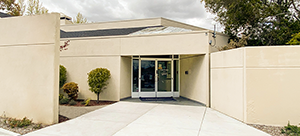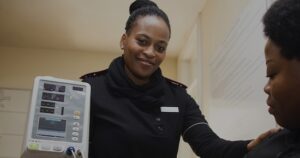Did you know that you can lose as much as 40 percent of your vision to glaucoma without even noticing? Known as “the sneak thief of sight,” the disease may exhibit few symptoms — or no symptoms at all — and results in permanent vision loss.
As Glaucoma Awareness Month and Low Vision Awareness Month, respectively, January and February put the focus on eye health. Vision loss and eye diseases have become problems for more individuals as people live longer. By 2030, as the last of the baby boomers reach the age of 65, more than 7 million Americans are expected to have some degree of visual impairment.
Up to 5 million of those individuals may have low vision, which cannot be corrected with glasses or standard medical interventions. People suffering from low vision may have trouble with typical daily activities, such as cooking, reading and shopping. In some cases, vision rehabilitation can help those with low vision adapt by learning to move safely within the home and continuing to engage in normal activities.
The Heavy Toll of Glaucoma
During Glaucoma Awareness Month, the American Academy of Ophthalmology seeks to raise awareness about preventing and treating the condition. Because glaucoma often progresses so gradually, many people are not aware of it until they have already experienced vision loss.
People over the age of 60 are among those at highest risk for developing glaucoma and other vision problems. More than 3 million Americans currently suffer from glaucoma, and that number is expected to increase by nearly 60 percent by 2030. About 4.5 million people around the world have lost their sight due to glaucoma, and the disease accounts for 9 to 12 percent of all cases of blindness in the United States.
The Importance of Eye Exams
The best strategy for avoiding glaucoma is getting regular eye exams, the academy advises. February is also Age-Related Macular Degeneration Awareness Month, and the American Academy of Ophthalmology urges people to get exams for early detection of the condition.
No cure currently exists for glaucoma, but surgery or medication may slow the progress of the disease and prevent further loss of vision. The right treatment depends on the specific type of glaucoma, along with other factors. Detecting the disease as early as possible is critical for halting its progress.
For people with glaucoma, vision loss may start with side or peripheral vision — making it easy to miss. If you have a family history of the disease or you’re over age 60, be sure to schedule regular eye exams with a certified ophthalmologist.




















